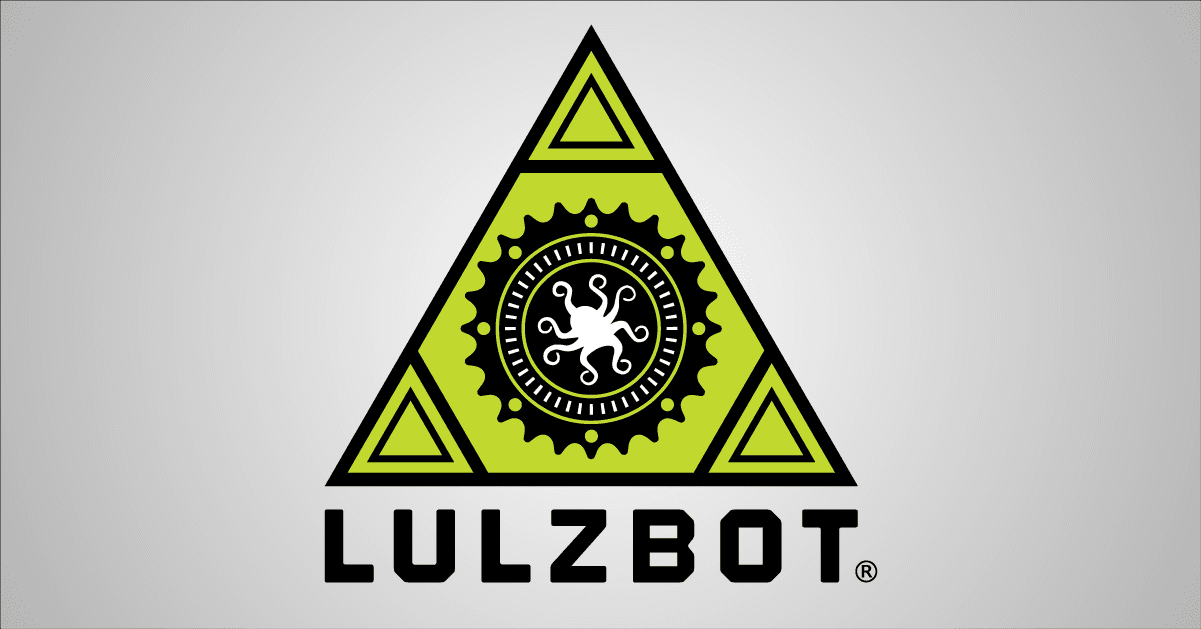The LulzBot TAZ 3D printer has one of the largest build areas in the desktop-class 3D printer market. While smaller, the LulzBot Mini has a productive 6 inch cubed build area. Use the tips below to get the most out of your 3D printer!
Utilize The Full Print Volume
Cura LulzBot Edition slicing profiles prime the hot end by extruding a one-perimeter-wide extrusion around the model. This priming extrusion, known as a 'skirt' ensures that the hot end is extruding when it starts to print the actual object. Turn off the Skirt option to fill the full print volume.
In Cura LulzBot Edition select your filament and desired print profile before switching to Expert Mode.
In the upper menu select: Expert > Switch to full settings.
At the prompt, select Yes to copy over the existing slicing profile settings.
Cura LulzBot Edition will now display many of the various options that make up a filament quickprint profile. On the Basic tab, in the Support section, press the '...' button found at the end of the Platform adhesion type variable to open the options menu.
In the new window, under Skirt > Line count change the value to '0' (zero). Press the Ok button to close the window.
Scale the model to fit your needs, or press the Scale, then Max button to automatically scale the model while preserving the current axis ratios. Click on the Unlock icon to change each axis dimension and scale as desired.
Rotate The Model To Fit
If the model looks like it could be scaled larger, but isn't arranged on the virtual print surface ideally, rotate the model!
Select the model and press the Rotate button. To rotate the model in 1 degree increments hold the Shift key while clicking on one of the three axis indicators.
Scale the model as desired.
Use The Right Material
You're no longer limited to only ABS or PLA. We offer over 30 different 3D printing filaments each with their own ideal use case.
Screwless Heart Gears by Emmett
Recommended filament options include:
PLA: One of the first materials used in 3D printing, PLA features many color choices with translucent or matte options. PLA is a great, economical choice for large objects that will not be subjected to temperatures hotter than 115°F/46°C.
PLA Blends: Options include: Magnetic Iron PLA, Stainless Steel, copperFill, brassFill, and bronzeFill. Large-scale objects can even be printed with wooden, fiber-based PLA by using woodFill, bambooFill, and Laywoo-d3 to achieve a softer, more natural finish.
High Temp PLA: A new exciting blend of PLA plastic, High Temp PLA 3D prints at higher temperatures for improved heat resistance and is stronger than traditional PLA plastic. Coffee PLA even smells like coffee during the 3D printing process!
Polyesters and Co-polyesters Featuring vibrant colors and outstanding strength, INOVA-1800, n-vent, and nGen are Amphora-based co-polyester polymers. They excel at larger-scale 3D printed objects and work well with printing objects that require dimensional accuracy and stability. t-glase is a PET-based Co-polyester that exhibits amazing strength as well, but with superior translucence.
Flexible filaments such as NinjaFlex and SemiFlex work great when 3D printed with our Flexystruder Tool Head v2 to create large-scale objects that need to be flexible, strong, and resilient. Apply PVA-based glue to the print surface to help object release. Due to the slower printing speed, large objects printed with flexible materials will take longer to complete.
Avoid Using:
ABS: ABS shrinks when cooling. At larger scales this leads to splitting layers and printed objects that can warp off the bed.
HIPS: While a great economical choice for larger objects, HIPS shrinks while cooling as well, but to a lesser-degree than ABS.
Nylon: At larger scales you'll need to apply a PVA-based white school glue to the print surface to help increase printed object adhesion. Of all the nylon materials, Alloy 910 or PCTPE perform the best at larger scales, with Bridge to a lesser degree.
Polycarbonate: Similar to Nylon, Polycarbonate warps while cooling. Apply a PVA-based white school glue to the print surface to help with part adhesion.









